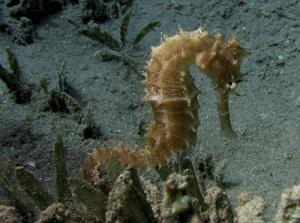
Whilst on holiday, you have probably seen shells, dried starfish and maybe, even seahorses in curio shops around the globe. These curiosities are so popular; approximately 25 million seahorses are sold per year via this trade, the pet trade and their use in traditional medicines. With little known about the actual population of seahorses, it is very difficult for conservation strategies to establish if a sustainable catch is viable in the future.
It is estimated that seahorse populations have declined between 15 – 70% in recent years because of trading and the decline of their natural habitats. Coral reefs face difficulties such as climate change, curio trade, pollution, bleaching and destructive fishing practices. Recently the Global Coral Reef Monitoring Network have reported that globally, approximately 19% of coral reefs have already disappeared, 15% are under serious threat in the next 10 – 20 years and 20% will be lost in the next 20 – 40 years!
In addition to this, another habitat used by seahorses, seagrass meadows are also under threat from similar pressures. It has been estimated that losses of up to 90% have been seen in Chesapeake Bay (the U.S.) in the last 50 – 100 years and in just 20 years; approximately 50% of seagrass meadows have been lost in Vietnam.
Another factor contributing to seahorse declines is their biology. They reach sexual maturity late in life; consequently, they are often removed from the wild before they have time to reproduce. When they do reproduce, they have low birth rates when compared to other marine species such as fish. For example, cod can produce an estimated 200 000 eggs per spawn, whereas a seahorse will birth around 1000 young per year.
All these factors are negatively contributing to the global decline of seahorse populations. With increased awareness and education, attitudes towards seahorses are slowly changing. For example, individuals are beginning to see that seahorses are worth more alive to them because of tourism, rather than supplying them to the curio trade. This, combined with additional research into population levels, will hopefully see a sustainable conservation strategy put into place in the not too distant future before it is too late.
Haley Dolton

